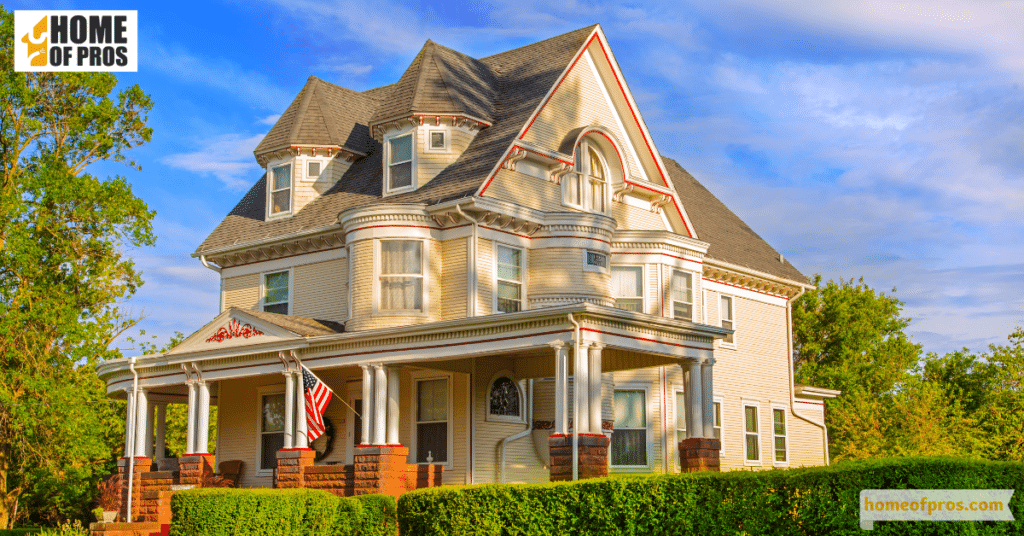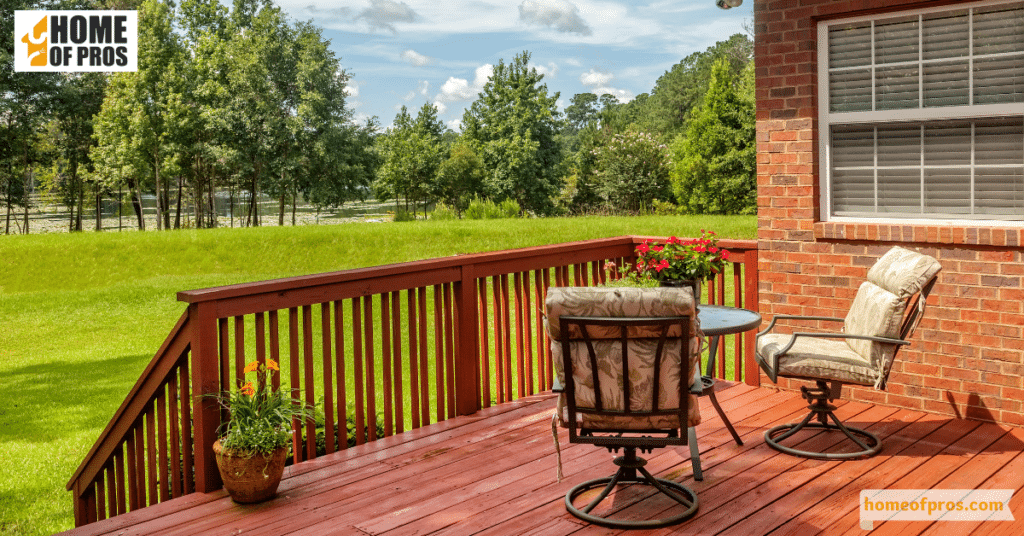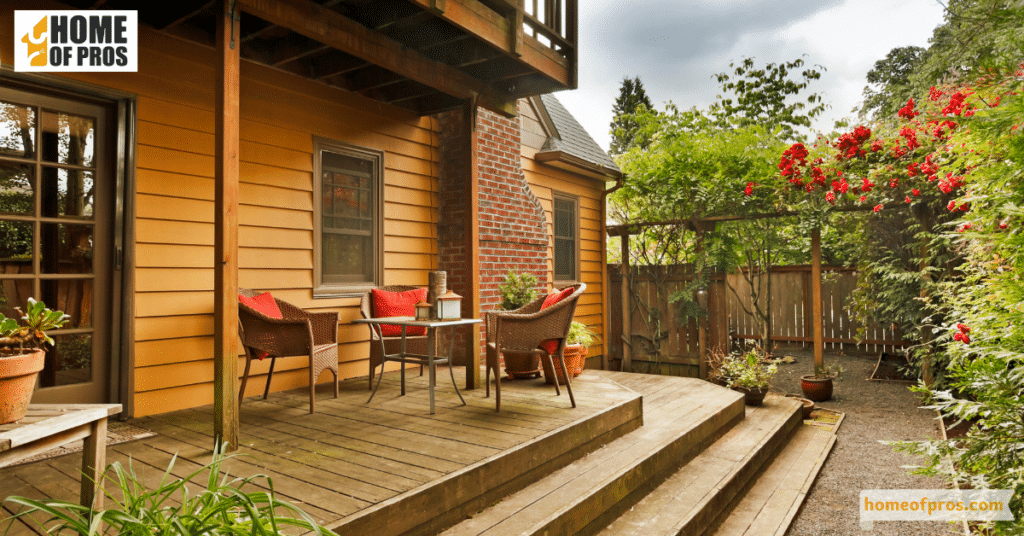Selecting the perfect deck color for your home involves considering the architectural style, existing exterior hues, and surrounding landscape. Test various color samples during different times of the day to understand how sunlight affects your choice. Ultimately, opt for a color that complements your home’s aesthetic and stands the test of time.
Your home’s deck is more than just functional—it’s a stylistic extension of your living space. The right deck color can significantly enhance your home’s overall aesthetics. Architectural style, existing exterior shades, and surrounding landscapes are just a few factors that influence this pivotal choice. Let’s explore how to make the best selection.

Understanding Your Home’s Architectural Style
The architectural blueprint of your home speaks volumes about its character, and this voice needs to be consistent when selecting deck colors. For traditional homes that exude an old-world charm with intricate detailing and moldings, classic wood tones like rich mahogany or red cedar often provide an elegant touch.
On the other hand, contemporary homes, characterized by their minimalist and sleek design lines, can be elevated with modern hues such as cool grays or even a bold deep blue. For colonial homes that resonate with historical essence, muted, warm shades like barn red or colonial blue might be the ideal choice. Every architectural style carries its own set of ideal palettes, and tuning into this can ensure aesthetic harmony.

The Influence of Existing Exterior Colors
When you’re standing back and looking at your home, your deck should appear as a natural extension, not an afterthought. Homes with a red brick facade might best be complemented by earthy, muted tones to create a cohesive appearance. Conversely, if your home’s exterior is painted in a vibrant shade like navy blue or slate gray, you might consider contrasting it with a lighter deck color to introduce some visual balance. It’s all about creating a dialogue between the hues of your deck and the existing shades on your home’s exterior, ensuring they complement and elevate each other.

Considering the Landscape and Surroundings
Mother Nature plays a pivotal role in influencing your deck color choices. For properties nestled in wooded areas with dense forest backdrops, using deep forest greens or rustic browns can create a harmonious transition from the deck to the surroundings. If your deck is by a pool, you might want to infuse a coastal or resort-like feel. Opting for sun-reflective lighter shades or tropical teals can mimic the refreshing aura of water bodies, enhancing the poolside ambiance.

The Impact of Sunlight and Shadows
The interplay of sunlight and shadows can dramatically alter the appearance of your deck’s hue. Dive into the nuances of light, understand its shifts throughout the day, and choose a deck color that remains consistent and appealing in all lighting conditions.
1. The Sun’s Position
The journey of the sun across the sky brings with it varied hues and intensities. In the morning, the gentle eastward rays can illuminate your deck with a warm and inviting glow, making colors seem more vibrant. As the sun peaks and then starts its descent towards the west, deck colors might transition to a cooler and more serene palette. This ebb and flow of light and color dynamics is crucial to consider for a deck that looks great all day long.
2. Cloud Cover
Not every day is sunny, and the presence of clouds can significantly impact your deck’s appearance. Overcast conditions often diffuse sunlight, leading to more even but muted lighting. This can result in deck colors appearing more grayish or subdued than they would under a clear, sunny sky. It’s essential to be content with how your chosen color looks both on bright days and when the sky is laden with clouds.

3. Natural Shade
Beyond just the sun, other elements can cast shadows on your deck. Trees, especially if they’re close by, might drape sections of your deck in shade. Similarly, surrounding structures, homes, or even outdoor furniture and umbrellas can create patterns of light and shadow. These varying shades can make one part of your deck look slightly different in color compared to a sunlit part. Being aware of these natural shade sources helps in picking a color that remains harmonious under diverse conditions.
4. Testing is Key
Making decisions based on a small swatch or a catalog picture can be misleading. Before settling on a particular deck color, it’s prudent to test out larger samples in different areas of your deck and under varied light conditions. Observe them multiple times throughout the day — morning, noon, and evening — to gauge the shifts and ensure that you’re content with the color’s appearance in all lighting scenarios.
A harmonious deck color is one that stands the test of changing light. By being attentive to the dance of sunlight and shadows, you ensure that your deck remains a visually appealing extension of your home, no matter the time of day.

Trends vs. Timeless Choices
Deck color trends, like all design trends, evolve. Charcoal decks or bleached wood finishes might be the talk of the town today, but will they carry the same appeal a decade from now? While it’s invigorating to draw inspiration from current design waves, it’s equally crucial to invest in shades that won’t feel outdated too quickly. The key is to find a balance: a color that resonates with contemporary design but also holds a timeless aesthetic appeal.

Practical Tips for Finalizing Your Choice
Choosing the perfect deck color is both an art and a science. As you approach your final decision, a few practical steps can guide you to a choice that satisfies you for years to come.
- Order Sample Swatches: A color in a catalog can look vastly different in real life. Order physical samples and observe them in the actual deck environment.
- Consult with Professionals: They bring a wealth of experience and might offer insights you haven’t considered. A professional opinion can often be the difference between a good choice and a great one.
- Factor in Maintenance and Wear: Some colors might show wear, stains, or fading quicker than others. Consider the long-term appearance and maintenance needs of your chosen hue.
- Trust Your Instincts: While research and advice are crucial, your intuition is invaluable. After all, you’ll live with this color the most.
- Seek Feedback: Involve family members or close friends in your decision. They might provide perspectives or considerations that hadn’t crossed your mind.
The journey to the perfect deck color is collaborative and introspective. By combining practical steps with a touch of instinct, you ensure a choice that resonates with both your home’s aesthetic and your personal preference.

Conclusion
Choosing the right deck color hinges on understanding light’s influence, aligning with your home’s style, and ensuring harmony with the surroundings. Practical steps, like sampling swatches and seeking expert opinions, further refine the selection process. Amidst these technicalities, trusting one’s instincts remains crucial. Ultimately, the perfect deck color not only beautifies but also enhances the space’s functionality, making the choice worthy of careful thought.












